Directions (1 -2): Shatish invested Rs. 1700 in a scheme ‘A’ for two years which offered S.I. annually at the rate of R% and gets total interest of Rs. 544. Another scheme B, which offered CI annually at the rate of (R – 6) %.
Q1. If a man invested Rs. (2000 + x) in scheme A for 2 years and Rs. (1600 + 3x) in scheme B for 2 years and interest got from scheme A is Rs180 more than interest got from scheme B, then find ‘x’?
(a) 800 Rs.
(b) 1000 Rs.
(c) 1600 Rs.
(d) 400 Rs.
(e) 2000 Rs.
Q2. A man invested an amount in the ratio of 3 : 2 at the rate of (R/2-0.5)% & (R – 8)% respectively. If bigger amount invested for two years and man got interest in the ratio of 15 : 16, then find smaller amount invested for how many years?
(a) 2 years
(b) 3 years
(c) 5 years
(d) 7 years
(e) 11 years
Q3. A mixture contains ‘X’ litre milk and ‘Y’ litre water. If 30 litre of mixture is taken out and replaced with water such that ratio of milk and water becomes 1 : 1. But if 60 litre of mixture is taken out and replaced with water then ratio of milk and water becomes 1 : 2.
Quantity I: Value of ‘X’
Quantity II: Value of ‘Y + 40’
(a) Quantity I > Quantity II
(b) Quantity I < Quantity II
(c) Quantity I ≥ Quantity II
(d) Quantity I ≤ Quantity II
(e) Quantity I = Quantity II or No relation
Q4. There are three types of colored balls in a box. Probability of selecting one ball of ‘Blue color’ and one ball of red color is 2/5 and 1/3 respectively. Number of blue color balls is 6 more than that of black color balls in the box.
Quantity I: Probability of selecting two black color balls from the box.
Quantity II: 1/18
(a) Quantity I > Quantity II
(b) Quantity I < Quantity II
(c) Quantity I ≥ Quantity II
(d) Quantity I ≤ Quantity II
(e) Quantity I = Quantity II or No relation
Q5. Quantity I : Days after which A and B meet. A and B set out to meet each other from two places 165 km apart. A travels 15 km the first day, 14 km second day, 13 km the third day and so on, B travels 10 km the first, 12 km the second day, 14 km the third day and so on.
Quantity II: Number of days required to complete the whole work if A, B and C can complete a piece of work in 10, 12 and 15 days respectively. A left the work 5 days before the work was completed and B left 2 days after A had left.
(a) Quantity I > Quantity II
(b) Quantity I < Quantity II
(c) Quantity I ≥ Quantity II
(d) Quantity I ≤ Quantity II
(e) Quantity I = Quantity II or No relation
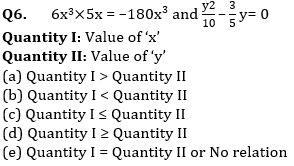
Directions (7-10): The following questions are accompanied by three statements (1), (2) and (3). You have to determine which statements(s) is/are sufficient/necessary to answer the questions from the given options.
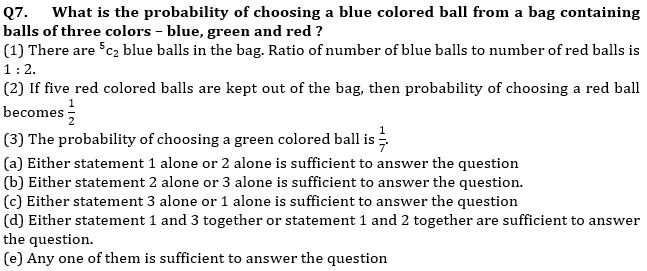
Q8. In a race of 1000 m, who among Rahul, Vikas, Vikram and Dev will win ?
(1) In a race of 500 m, Rahul beats Vikas by 100 m.
(2) In a race of 800 m, Vikram beats Dev by 200 m.
(3) In a race of 2500 m, Rahul beats Dev by 600 m.
(a) Either statement 1 alone or 2 alone is sufficient to answer the question
(b) Either statement 2 alone or 3 alone is sufficient to answer the question
(c) Either statement 3 alone or 1 alone is sufficient to answer the question
(d) Any of two statements are sufficient to answer the question
(e) All three are required to answer the question.

Q10. In how many days B and D will complete the work together?
(1) Efficiency of A is 33 ⅓% less than that of B. Efficiency of A is half of that of C and efficiency of D is 25% of efficiency of C.
(2) All of them together can complete the work in 8 days.
(3) A and B together take same time as that of C and D together to complete the work.
(a) Either 1 and 2 together are sufficient to answer the question
(b) Either statement 2 alone or 3 alone is sufficient to answer the question
(c) Either statement 3 alone or 1 alone is sufficient to answer the question
(d) Any of two statements are sufficient to answer the question
(e) Any one of them is sufficient to answer the question.
Solutions
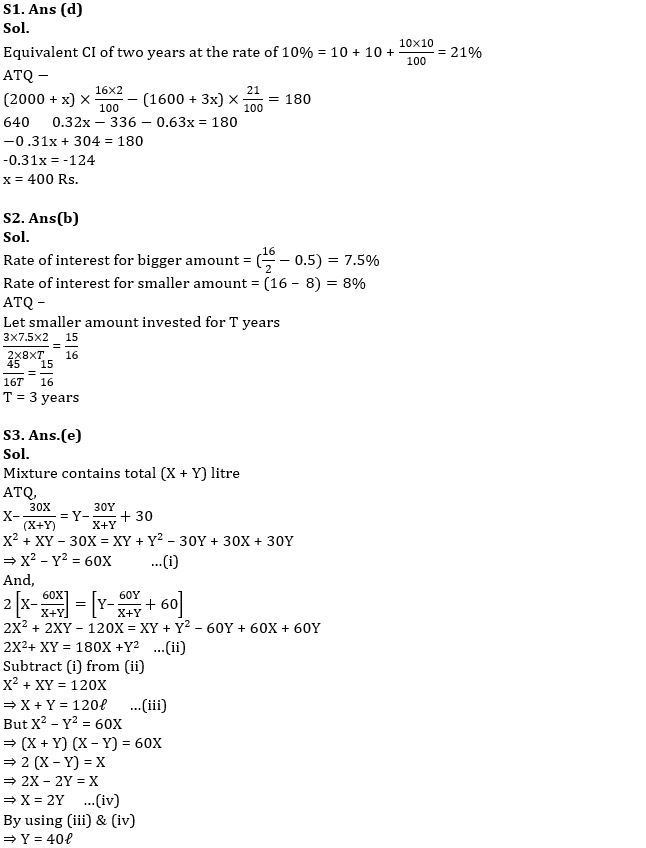
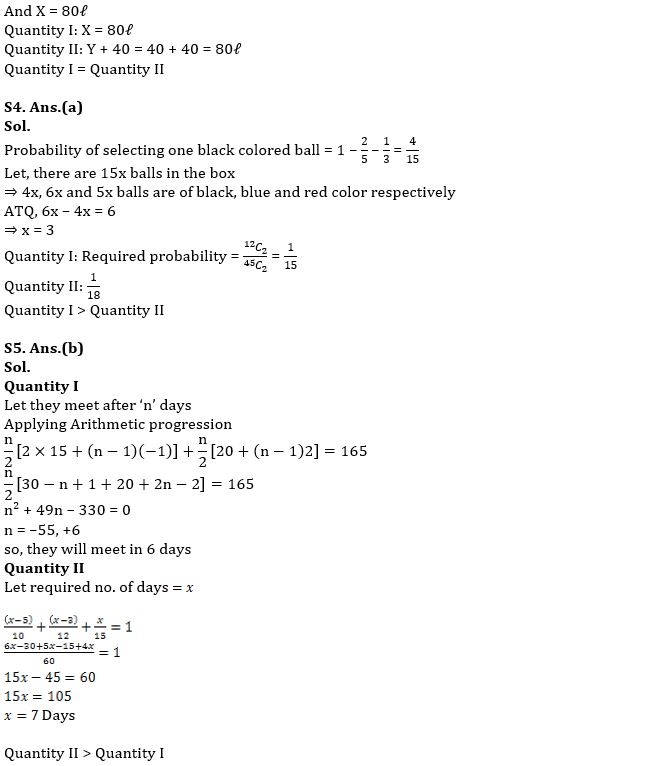
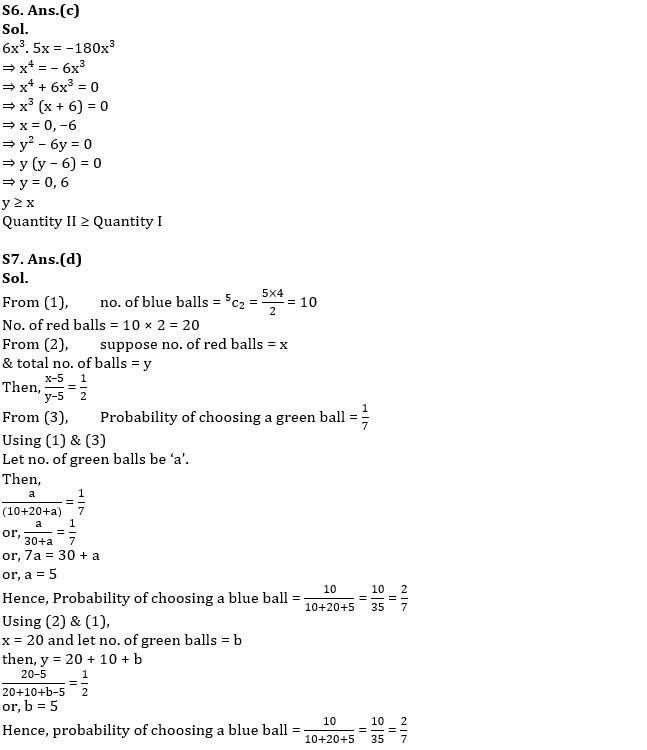
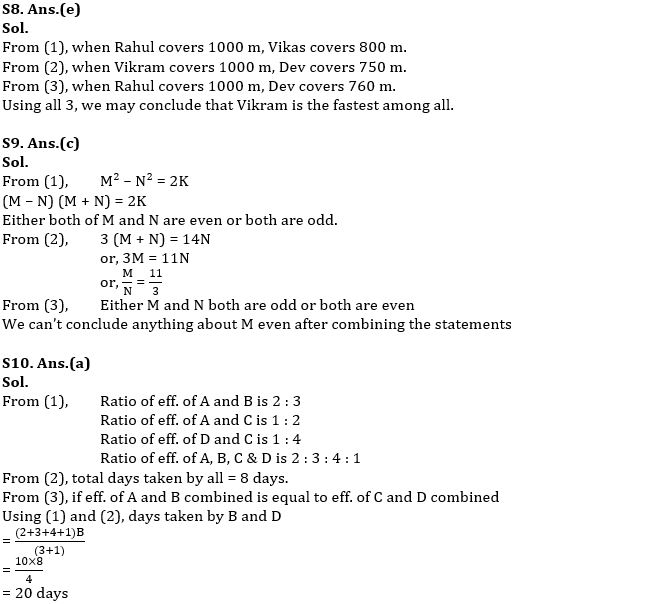


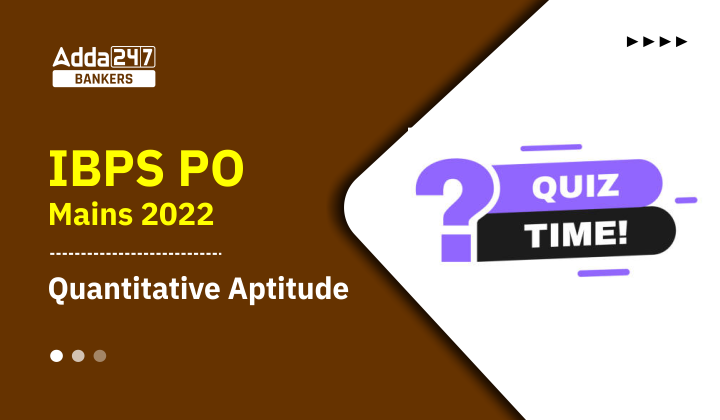


 Quantitative Aptitude Quiz For Bank Main...
Quantitative Aptitude Quiz For Bank Main...
 Quantitative Aptitude Quiz For Bank Foun...
Quantitative Aptitude Quiz For Bank Foun...




